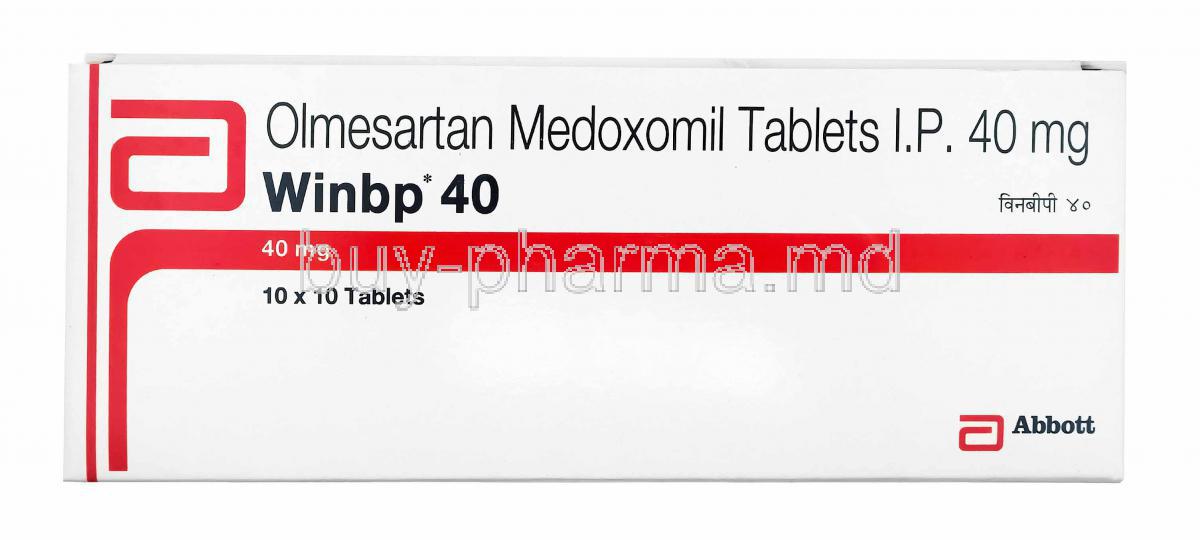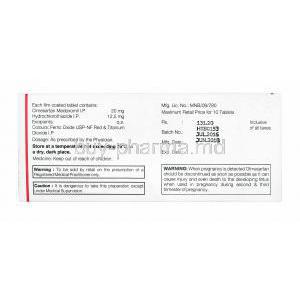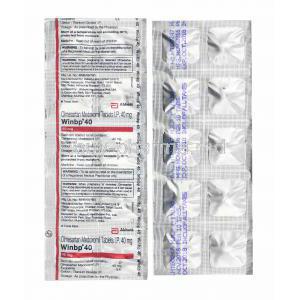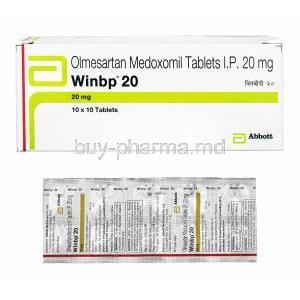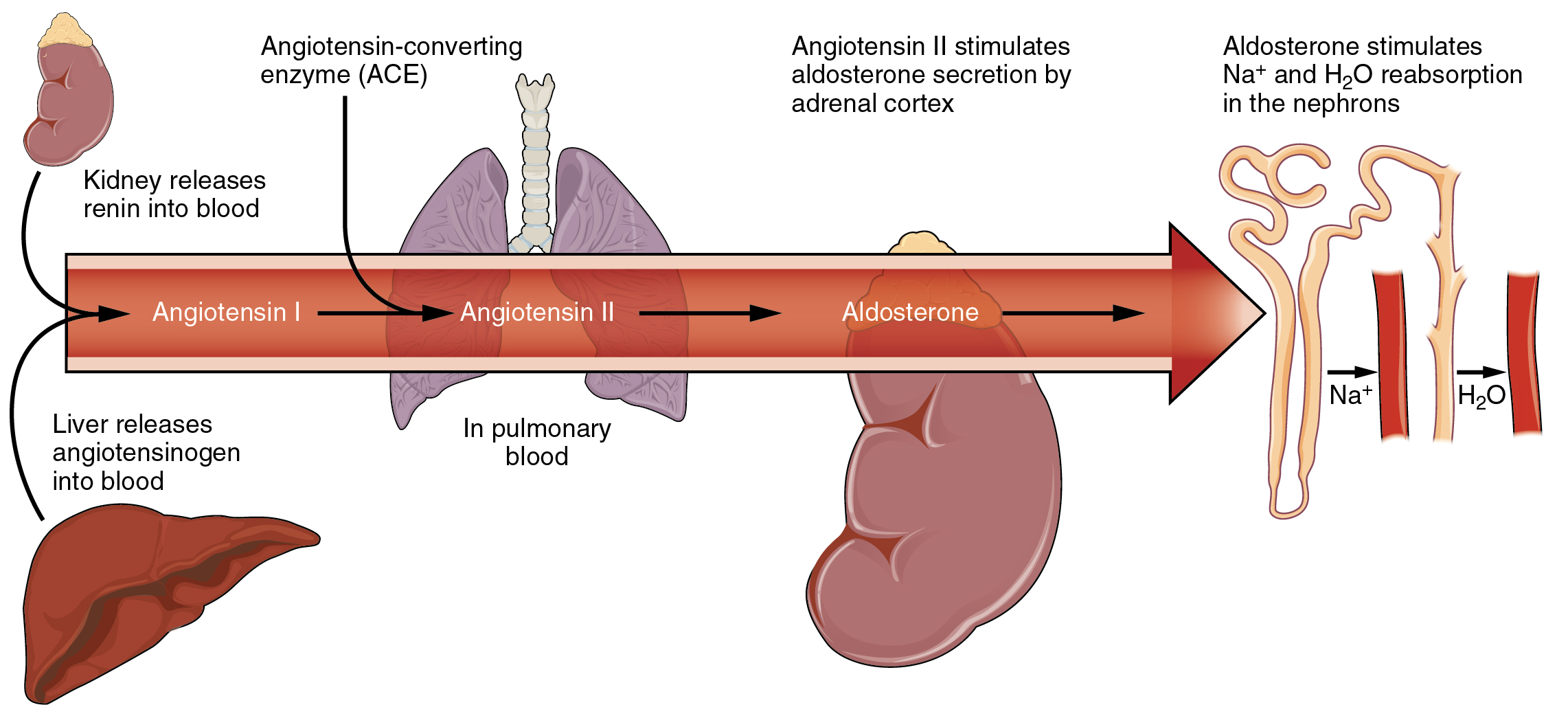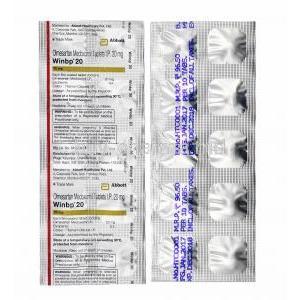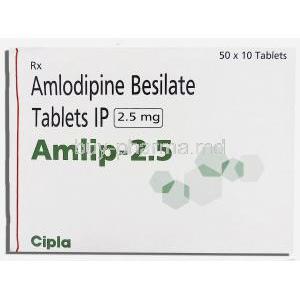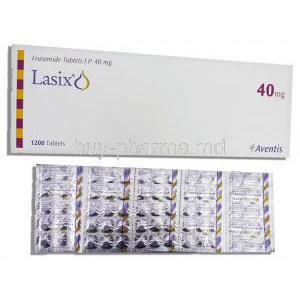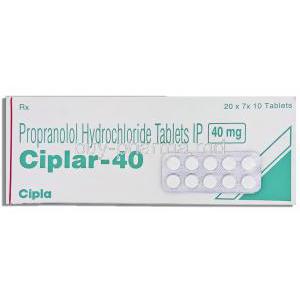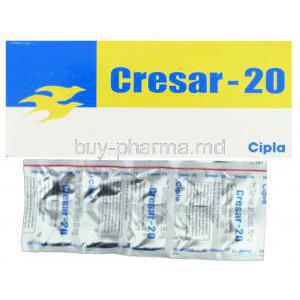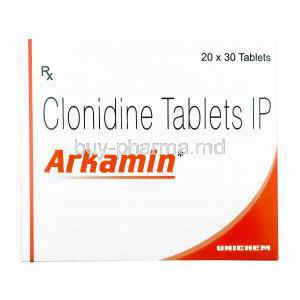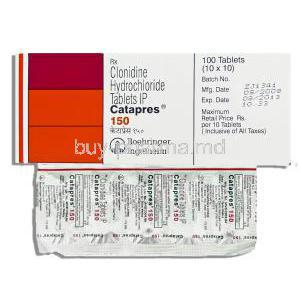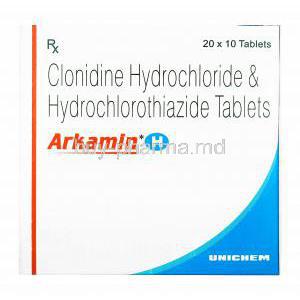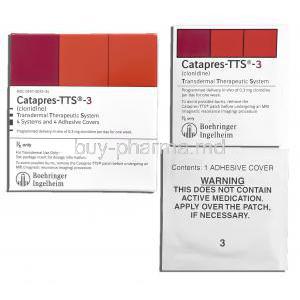Winbp, Olmesartan
- Introduction to Winbp (Olmesartan)
- Composition of Winbp (Olmesartan)
- Olmesartan Uses
- Off-Label and Investigational Uses of Winbp (Olmesartan)
- Olmesartan Mechanism of Action
- Dosage and Administration Guidelines
- Special Dosage Considerations
- Side Effects of Olmesartan Medoxomil
- Other Reported and Serious Side Effects
- Olmesartan Interactions and Combination Risks
- Contraindications for Use
- Olmesartan Warnings and Precautions
- Careful Administration Considerations
- Administration in Specific Populations
- Use in Pediatric Patients
- Overdose Management
- Storage and Handling Instructions
- Handling Precautions and Patient Counseling
Introduction to Winbp (Olmesartan)
Winbp is a widely used global medication containing Olmesartan medoxomil, primarily prescribed for hypertension (high blood pressure). It's valued for its strong effectiveness, low side effect profile, and long-lasting benefits, making it a key player in modern cardiovascular treatment.
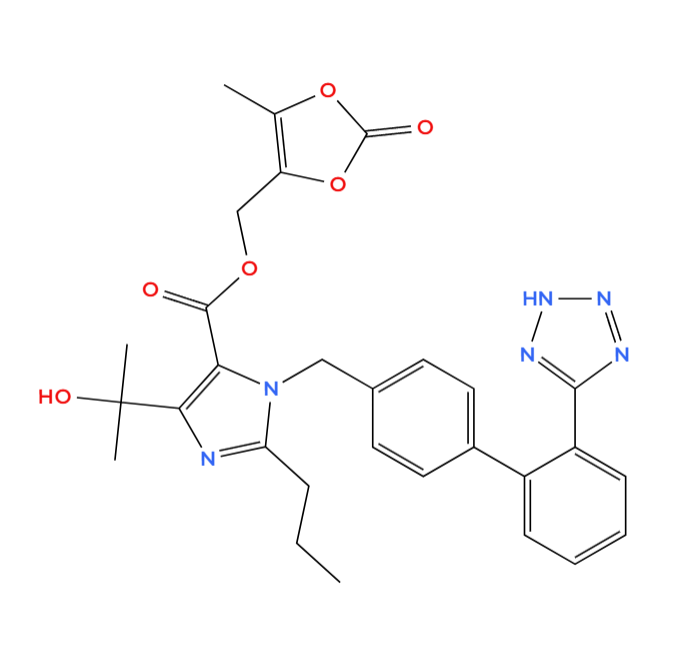
This medicine belongs to a class of drugs called Angiotensin II Receptor Blockers (ARBs). ARBs work by preventing angiotensin II from binding to AT1 receptors found on the muscle cells of blood vessels. This action leads to blood vessel widening, a decrease in resistance within the blood vessels, and ultimately, a reduction in blood pressure.
Olmesartan medoxomil, the active ingredient in Winbp, received its initial regulatory approval in 2002. Since then, it has transitioned from original branded versions like Benicar to a variety of generic forms, including Winbp and others, which are now widely available to consumers at a lower cost while maintaining their therapeutic effectiveness.
Composition of Winbp (Olmesartan)
Active Ingredient: Olmesartan Medoxomil
The main pharmacological element of Winbp consists of Olmesartan medoxomil, which is a prodrug that quickly breaks down in the stomach to produce its active metabolite form olmesartan. This change is crucial, for its effect as it helps in control of the renin angiotensin system.
Available Strengths and Formulations
Winbp comes in different oral tablet strengths, allowing for tailored dosing:
- 10 mg tablets are generally for starting treatment or for patients with kidney problems.
- 20 mg tablets are the usual maintenance dose.
- 40 mg tablets are used for more severe high blood pressure that needs a stronger effect.
Each tablet has a film coating, which makes it easier on the stomach and ensures the medication is consistently absorbed.
Inactive Ingredients and Excipients
Beyond its main ingredient, Winbp also includes inactive components that help the tablet hold together and work effectively in the body. These are:
- Microcrystalline cellulose
- Hydroxypropyl cellulose
- Lactose monohydrate
- Magnesium stearate
- Titanium dioxide (for the coating)
These ingredients ensure the tablet dissolves consistently, remains stable, and is easy to take.
Olmesartan Half-Life
Olmesartan stays in the body for a long time, with its effects lasting about 13 hours. This allows patients to take it just once a day, making it easier to stick to their medication schedule while ensuring their blood pressure remains controlled around the clock.
Amlodipine Olmesartan
For patients with moderate to severe high blood pressure, or those needing a multi-pronged approach, combining olmesartan (an ARB) with amlodipine (a calcium channel blocker) is a common and effective strategy. This dual treatment works by both widening blood vessels and suppressing the renin-angiotensin system, providing better blood pressure control than using either drug alone.

Olmesartan to Losartan Conversion
Switching between different ARBs, like from losartan to olmesartan, is considered clinically appropriate. Olmesartan typically offers higher receptor binding affinity and a longer duration of action, making it a favorable option for patients with resistant hypertension.
An approximate dose conversion is:
- Losartan 50 mg ≈ Olmesartan 20 mg
However, therapeutic outcomes can differ depending on coexisting medical conditions and individual patient response.
Olmesartan Hydrochlorothiazide
For patients whose high blood pressure is influenced by fluid volume, Winbp is also offered in combinations with hydrochlorothiazide (HCTZ), a diuretic. This pairing works together to increase sodium excretion and provide additional blood pressure lowering effects.
These fixed-dose combinations are available in the following strengths:
- Olmesartan 20 mg + HCTZ 12.5 mg
- Olmesartan 40 mg + HCTZ 25 mg
Olmesartan vs Valsartan
Both olmesartan and valsartan are angiotensin II receptor blockers (ARBs), but they differ in how they act and their real-world effectiveness:
- Olmesartan stays in the body longer and binds more strongly to its target receptors.
- Valsartan is a proven treatment for heart failure, though it might require more frequent dosing in some cases.
Studies comparing their 24-hour blood pressure control often show olmesartan performing better. Nevertheless, both medications are commonly recommended as initial treatments, with the choice depending on the individual patient's needs.
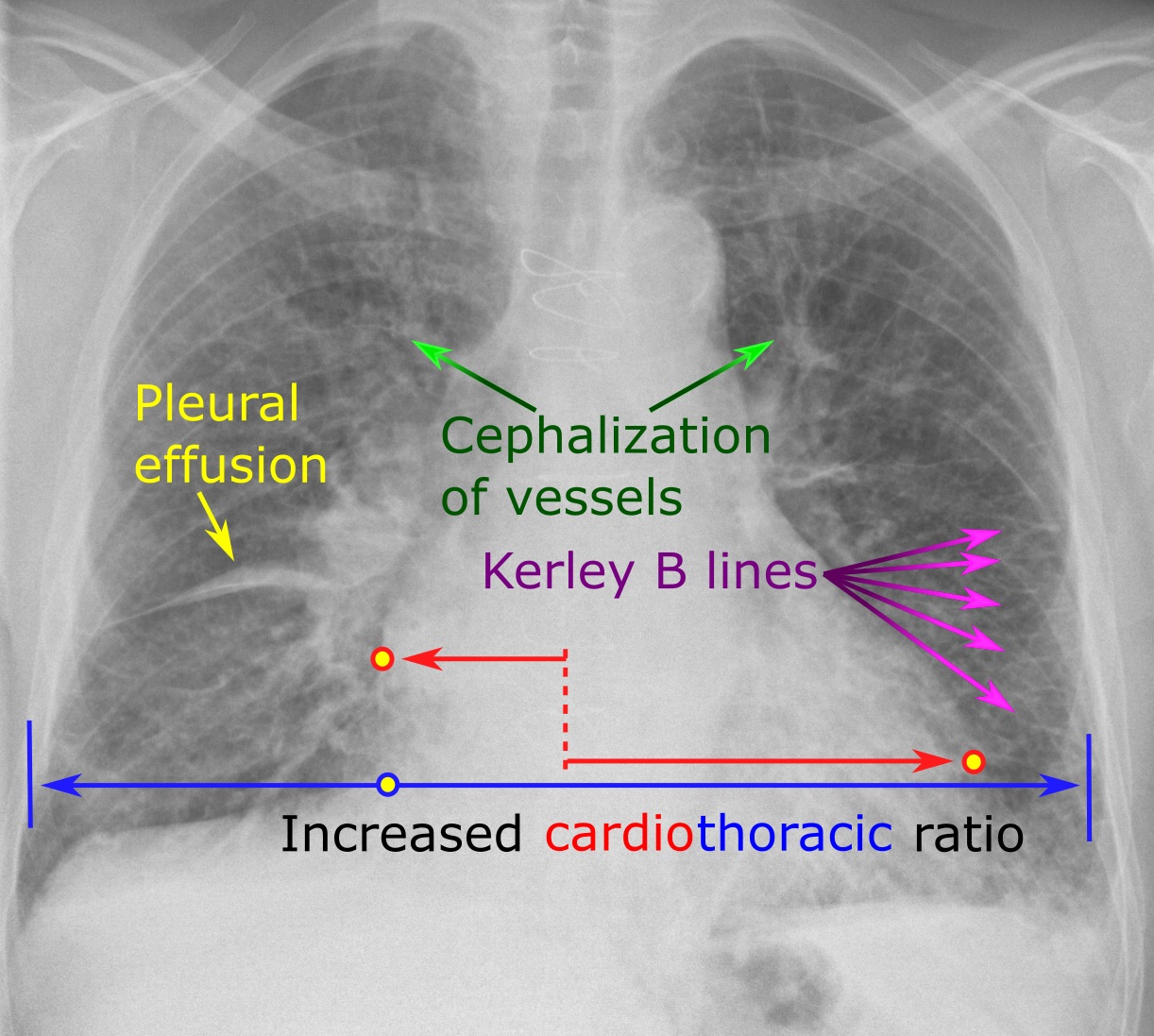
Olmesartan vs Lisinopril
Lisinopril, an ACE inhibitor, and olmesartan, an ARB, both lower blood pressure and reduce the risk of heart-related issues, but they work differently and have distinct profiles:

- Lisinopril might offer better kidney protection for patients with diabetic kidney disease.
- Olmesartan is generally better tolerated by patients who can't take ACE inhibitors.
Ultimately, the best choice between these two medications depends on a patient's other health conditions and how well they tolerate the drug.
Olmesartan Uses
Primary Indication: Treatment of Essential Hypertension in Adults
Olmesartan medoxomil is primarily used to treat essential hypertension, which is high blood pressure without a clear underlying cause. It works by blocking angiotensin II from binding to receptors in blood vessel muscles. This action helps blood vessels relax and widen, lowering resistance and blood pressure.
For adults, a single daily dose of Olmesartan effectively controls blood pressure for 24 hours. It works well for various groups, including the elderly and those with conditions like type 2 diabetes or high cholesterol.
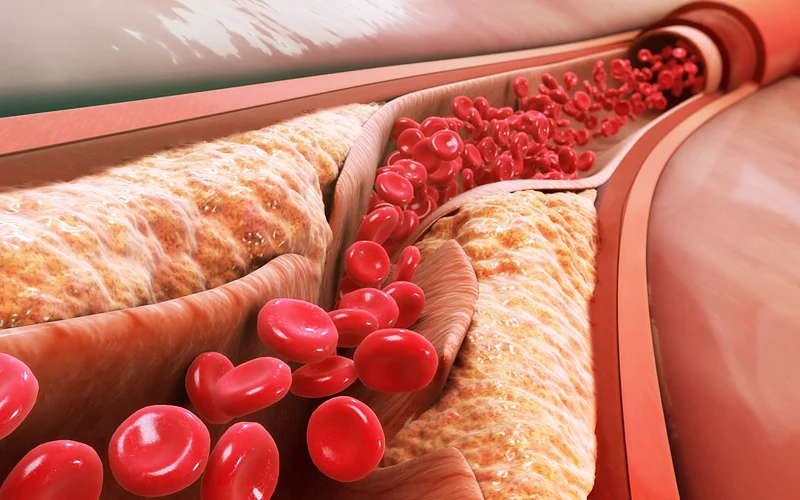
Key benefits include:
- 24-hour blood pressure control with just one dose.
- Effective when used alone or with other blood pressure medications.
- Well-tolerated, with few side effects that would require stopping treatment.
Over time, using Olmesartan can slow down damage to blood vessels caused by high blood pressure, helping to prevent kidney damage (hypertensive nephropathy) and the thickening of the heart's left ventricle.
Use in Reducing the Risk of Stroke in Hypertensive Patients
Uncontrolled high blood pressure is a leading preventable cause of strokes. Olmesartan helps lower stroke risk by consistently keeping blood pressure within normal limits, which eases the strain on brain blood vessels.
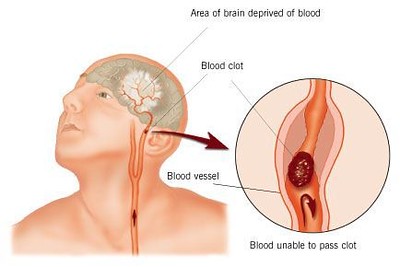
While Olmesartan isn't specifically approved just for stroke prevention, studies have shown that ARBs, including Olmesartan, significantly reduce both ischemic (clot-related) and hemorrhagic (bleeding) strokes in patients with managed hypertension.
Here's how it primarily works:
- It improves the function of blood vessel linings.
- It reduces arterial stiffness and the stress from pulsing blood flow.
- It helps maintain the brain's ability to regulate its own blood flow.
Especially for patients who have had mini-strokes (transient ischemic attacks) or silent brain damage (cerebral infarctions), treatment plans that include Olmesartan can be a crucial part of preventing future strokes, particularly when combined with overall vascular risk management.
Role in Long-Term Cardiovascular Risk Management
Beyond just lowering blood pressure, Olmesartan plays a crucial role in reducing long-term cardiovascular disease. By continuously suppressing the renin-angiotensin-aldosterone system (RAAS), it provides benefits to the heart and blood vessels, such as improving arterial flexibility and reducing the heart's workload.
Specifically, Olmesartan:
- Reduces the risk of a heart attack when used in combination therapy.
- Slows down the development of plaque in the arteries.
- Helps prevent harmful changes to the heart muscle in hypertensive heart disease.
Long-term studies have shown that patients taking Olmesartan have fewer major adverse cardiovascular events (MACE), including hospitalizations for heart failure and procedures to unblock coronary arteries. These benefits are even greater when Olmesartan is part of a complete treatment plan that includes managing cholesterol, blood sugar, and lifestyle changes.
Essentially, by consistently inhibiting the RAAS, Olmesartan not only normalizes blood pressure but also offers widespread protection for blood vessels, making it a key medication in managing long-term cardiovascular risks.
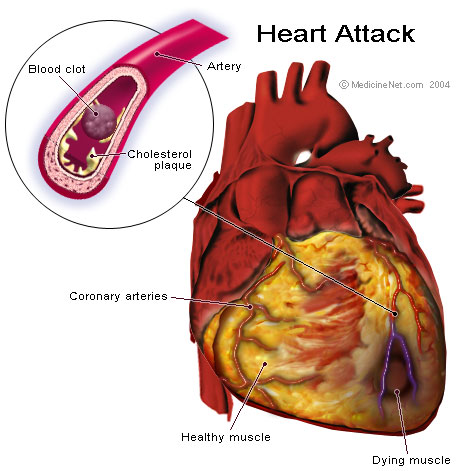
Off-Label and Investigational Uses of Winbp (Olmesartan)
Use in Diabetic Nephropathy Prevention and Management
Even though it's not an officially approved use, Olmesartan shows great promise in preventing and slowing down diabetic kidney disease. It protects the kidneys by lowering pressure inside the kidney's filtering units and by reducing the harmful effects of angiotensin II on the tiny blood vessels in the kidneys.
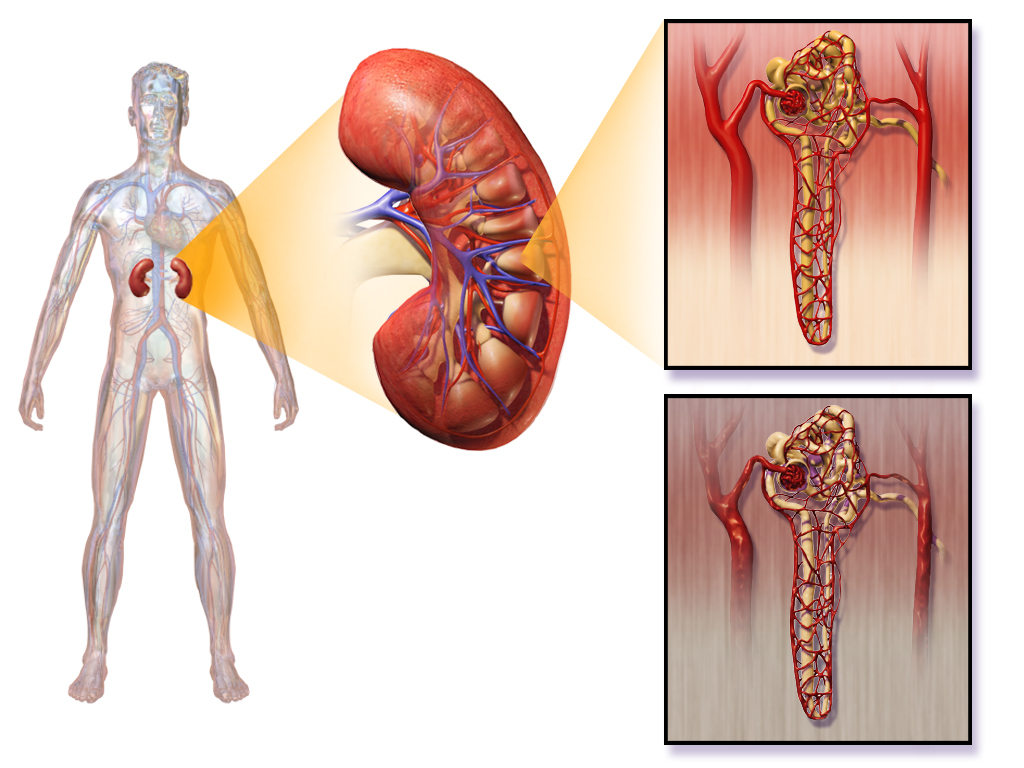
- When given early to people with either type 1 or type 2 diabetes, Olmesartan can:
- Delay the start of microalbuminuria (early sign of kidney damage).
- Lower the albumin-to-creatinine ratio (ACR), another marker of kidney health.
Keep the estimated glomerular filtration rate (eGFR), a measure of kidney function, stable.
Olmesartan is especially important for patients who can't tolerate ACE inhibitors, as it provides an alternative way to block the RAAS with fewer side effects, like cough or severe swelling.
Management of Heart Failure with Preserved Ejection Fraction (HFpEF)
Heart failure where the heart's pumping ability is preserved (HFpEF) is challenging to treat, with few medications showing clear benefits. However, Olmesartan is emerging as a promising option because it can reduce the heart's workload and ease stress on the left ventricle.
In certain groups of HFpEF patients, using Olmesartan off-label
(for an unapproved use) may lead to:
- Improved diastolic function (how well the heart fills with blood).
- A lower chance of being hospitalized for heart failure.
- Better exercise tolerance and overall quality of life.
By controlling overactive hormones and limiting scar tissue formation, Olmesartan helps reduce harmful changes to the heart muscle, especially in patients who also have high blood pressure and an enlarged left ventricle.
Use in Marfan Syndrome for Aortic Dilation Control
Marfan syndrome is a genetic disorder that often causes the main artery from the heart (the aorta) to progressively widen, which can lead to dangerous aneurysms or tears. Research suggests that angiotensin receptor blockers (ARBs) like Olmesartan might slow down this aortic expansion by affecting certain signaling pathways (specifically, transforming growth factor-beta or TGF-β).
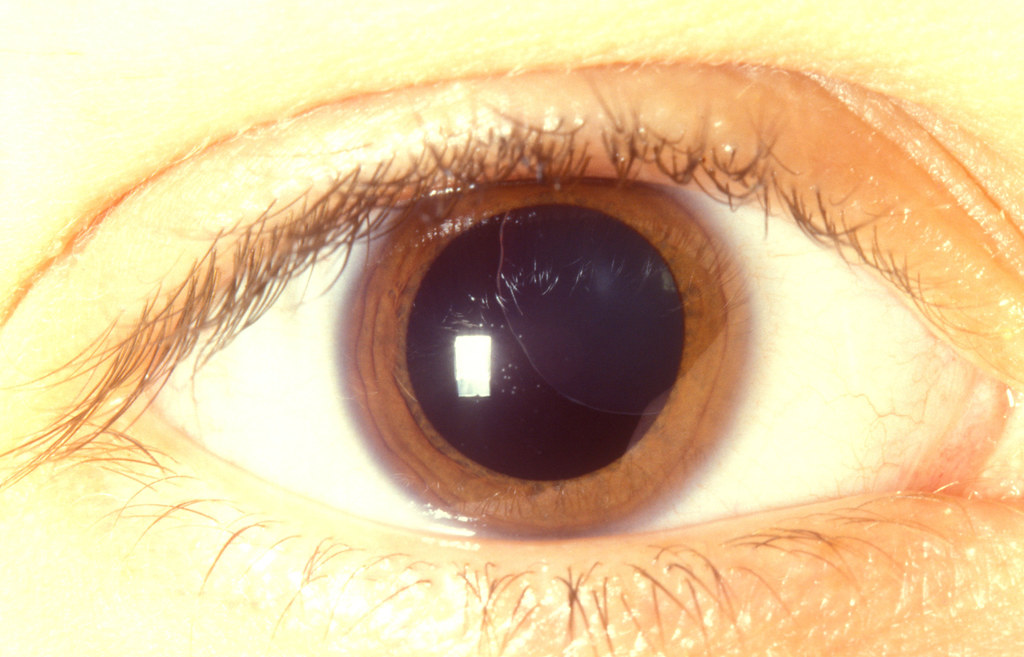
While still being investigated, Olmesartan is being considered for managing Marfan-related aortic problems because it may:
- Prevent the breakdown of the extracellular matrix, which is a key part of connective tissue, through its effect on TGF-β.
- Slow down the rate at which the aortic root grows.
- Offer an alternative for patients who can't tolerate beta-blockers.
Its use for Marfan syndrome is still experimental, but it's supported by how the drug works and early human studies.
Application in Proteinuria Management in Chronic Kidney Disease (CKD)
Proteinuria, or excess protein in the urine, is a key sign of chronic kidney disease (CKD) and often indicates that kidney function will worsen. Olmesartan helps by continuously blocking angiotensin II, which reduces how much protein leaks from the kidneys.
Olmesartan's kidney-protective benefits apply to various causes of CKD, including:
- Hypertensive nephrosclerosis (kidney damage from high blood pressure).
- IgA nephropathy (a kidney disease caused by immune system issues).
- Diabetic kidney disease.
In clinics, adding Olmesartan for patients with proteinuria can:
- Decrease the amount of protein excreted daily.
- Slow down CKD progression by protecting kidney filtering units.
- Postpone the need for dialysis or a kidney transplant.
This off-label use highlights Olmesartan's potential as a crucial part of kidney preservation plans, especially when blocking two parts of the RAAS isn't advised.
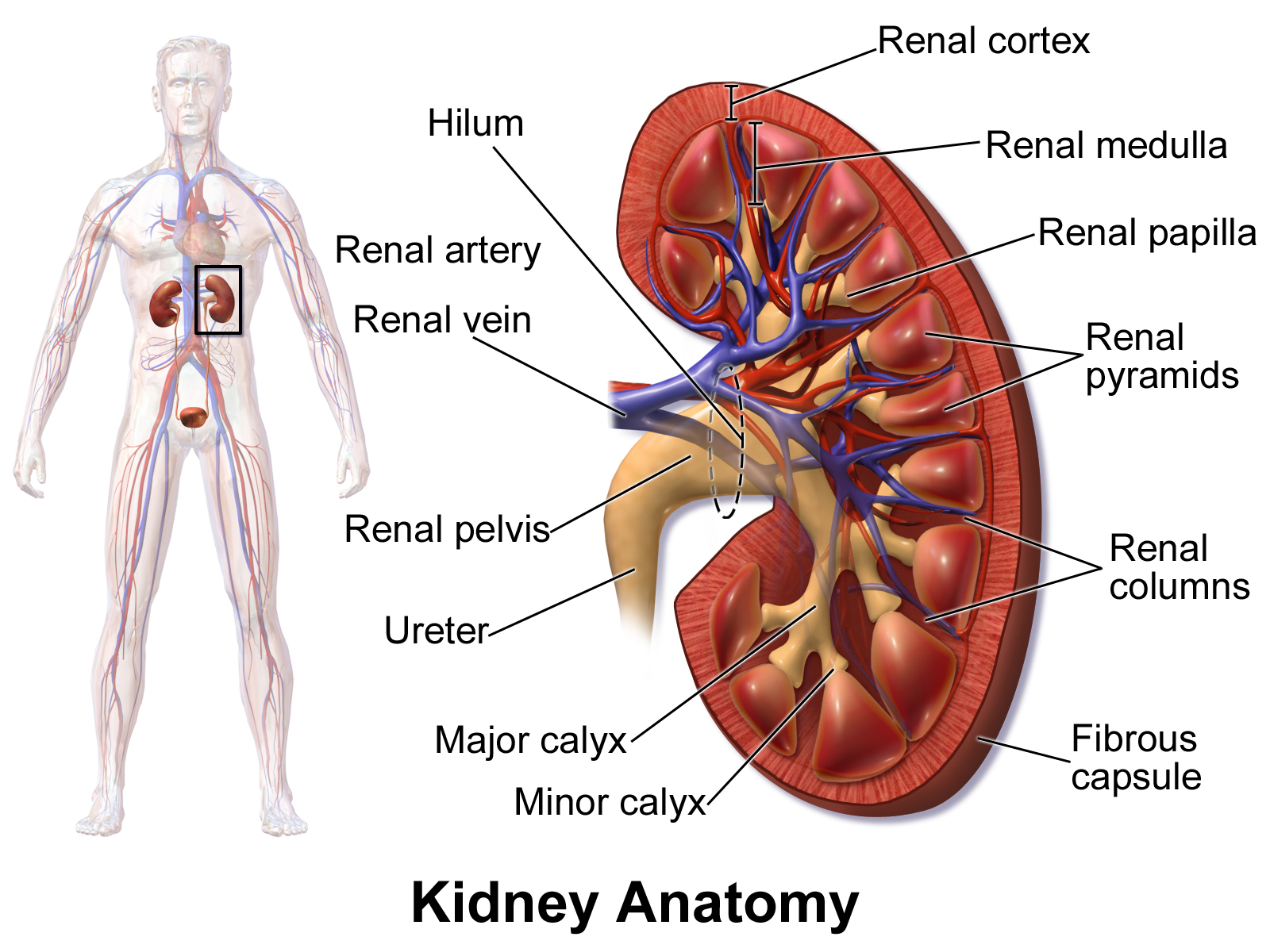
Olmesartan Mechanism of Action
Inhibition of Angiotensin II Receptor Subtype 1 (AT1)
Olmesartan medoxomil is a medication that, once taken orally, quickly converts into its active form, olmesartan. It works by specifically and competitively blocking angiotensin II from attaching to the AT1 receptor. This receptor is a crucial part of the body's renin-angiotensin-aldosterone system (RAAS), which regulates blood pressure. By blocking this receptor, olmesartan stops angiotensin II from causing blood vessels to narrow, activating the nervous system, and stimulating aldosterone production.
Unlike ACE inhibitors, olmesartan doesn't interfere with the breakdown of bradykinin. This is why it causes fewer side effects, like cough and angioedema (swelling). Its selective action means it targets the harmful effects of angiotensin II without disrupting other important bodily processes.
Effects on Vasodilation, Aldosterone Suppression, and Sodium Excretion
Olmesartan lowers both systolic and diastolic blood pressure by blocking AT1 receptors. This action causes arteries to widen and reduces resistance in the blood vessels. At the same time, it suppresses aldosterone, which decreases sodium reabsorption in the kidneys, leading to increased sodium and water excretion.
In simpler terms:
- Vasodilation relaxes blood vessel muscles, making it easier for the heart to pump blood.

- Aldosterone suppression helps reduce fluid retention and prevent potassium loss.
- Natriuresis (sodium excretion) helps lower the volume of blood in the vessels.
This combination of effects helps stabilize blood pressure and protects vital organs, especially in patients with high blood pressure and kidney disease.
Time to Onset and Duration of Antihypertensive Effects
Olmesartan starts to lower blood pressure within 1 to 2 hours, reaching its peak effect around 4 to 6 hours after you take it. If you take it daily, the amount of medication in your body becomes stable within 3 to 5 days. Importantly, its blood pressure-lowering effect lasts a full 24 hours, which is why most patients only need to take it once a day.
Even with long-term use, Olmesartan continues to control blood pressure effectively without any signs of it becoming less potent over time. Its long-lasting action and good absorption profile are why it consistently works well, whether used alone or with other medications.
Dosage and Administration Guidelines
Olmesartan Dose for Hypertension
Olmesartan is prescribed for essential hypertension (high blood pressure with no known cause). Adults usually start with 20 mg once daily. Your doctor might adjust the dose after two weeks, depending on how you respond.
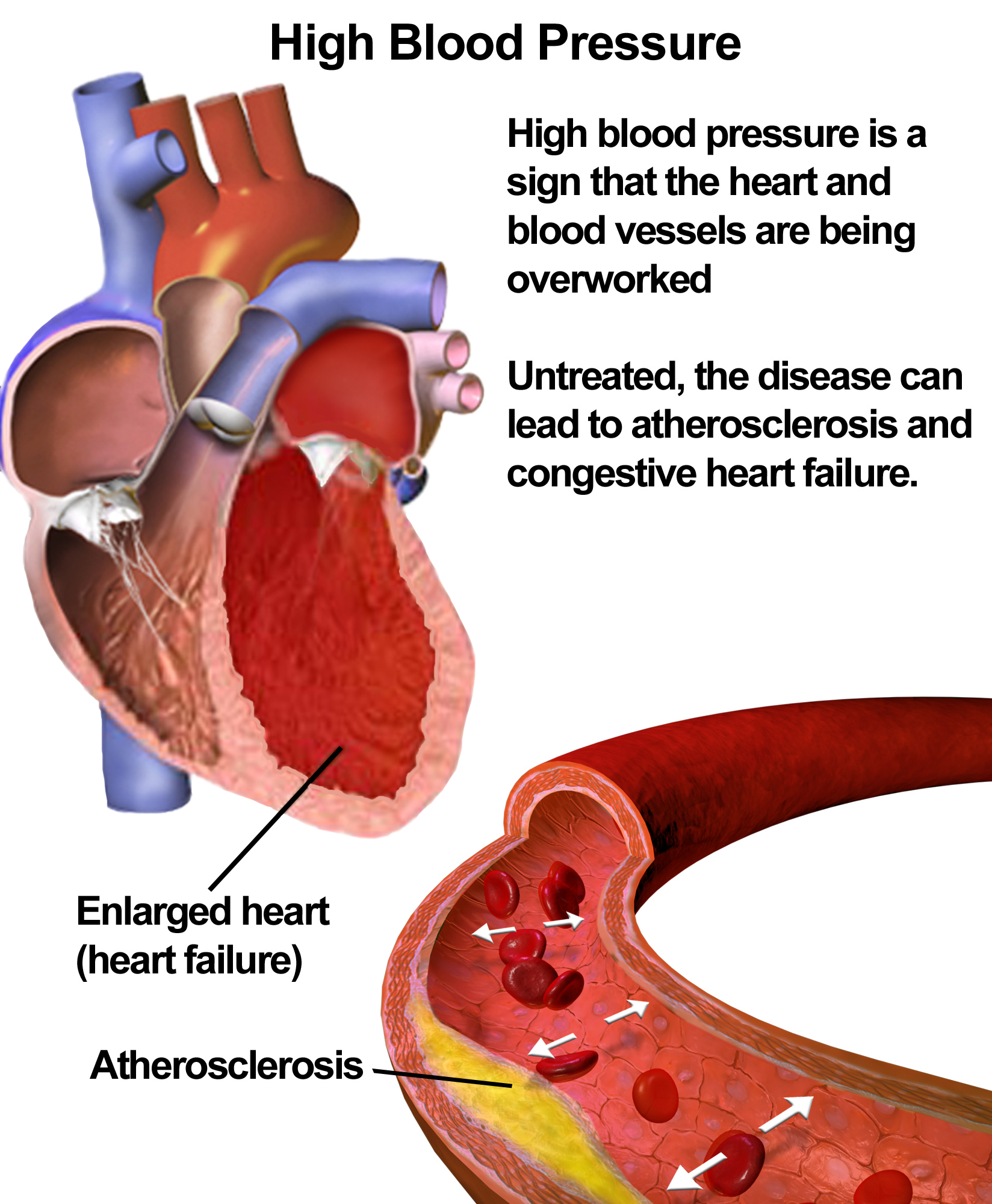
- Initial dose: 20 mg once daily
- Adjustment range: 10 mg to 40 mg daily
- Typical maintenance dose: 20–40 mg daily
Older patients or those with moderate kidney problems might need a lower starting dose.
Best Time to Take Olmesartan
You should take Olmesartan at the same time every day to keep its levels consistent in your body. Many people prefer taking it in the morning, especially if their blood pressure tends to spike then. However, for some, taking it in the evening might be better if their blood pressure is higher at night.
Ultimately, the best time to take it should be personalized to fit your blood pressure patterns and daily routine to ensure you stick to your medication schedule.
Dose Adjustment Based on Blood Pressure Response
Adjusting your Olmesartan dose should be based on regular blood pressure monitoring. If your blood pressure isn't well-controlled after two weeks on 20 mg once daily, your doctor might increase the dose to 40 mg. Conversely, if you experience too strong a response or side effects, the dose might be lowered to 10 mg.
- Your blood pressure response should be checked every 1 to 2 weeks.
- If a single medication isn't enough, it might be combined with thiazide diuretics or calcium channel blockers.
Olmesartan Max Dose
The highest recommended daily dose of Olmesartan is 40 mg. Taking more than this won't significantly improve blood pressure control and could actually increase the risk of low blood pressure or kidney problems, particularly if you're dehydrated.
Lowest Dosage of Olmesartan
Olmesartan is typically prescribed at a dosage of 10 mg, for patients with hypertension who have low body weight or heightened drug sensitivity.The medication is not commonly administered on its own. Can be effective, for patient groups.
Administration With or Without Food
Olmesartan can be taken with or without food since food intake doesn't significantly affect how the body absorbs the medication; however, maintaining a schedule with meals could help improve stomach tolerance in people who're more sensitive.

Missed Dose Protocol
If you forget to take your Olmesartan, take it as soon as you remember. However, if it's almost time for your next dose, just skip the one you missed to avoid taking too much.
- Don't double your dose to make up for a missed one.
- Just go back to your regular schedule the next day.
Taking your medication on time is really important to keep consistent levels in your body and ensure your blood pressure stays effectively controlled.
Special Dosage Considerations
Dosage Adjustments in Renal Impairment
If a patient has kidney problems, it's crucial to carefully adjust the dose of olmesartan medoxomil to avoid further kidney issues and high potassium levels. For mild to moderate kidney impairment (creatinine clearance of 30 mL/min or more), no initial dose change is strictly required, but close monitoring is still recommended.
However, for severe kidney impairment (creatinine clearance less than 30 mL/min):
- Start treatment at 10 mg once daily.
- Closely monitor blood levels of creatinine and potassium.
- Use with caution in patients on dialysis.
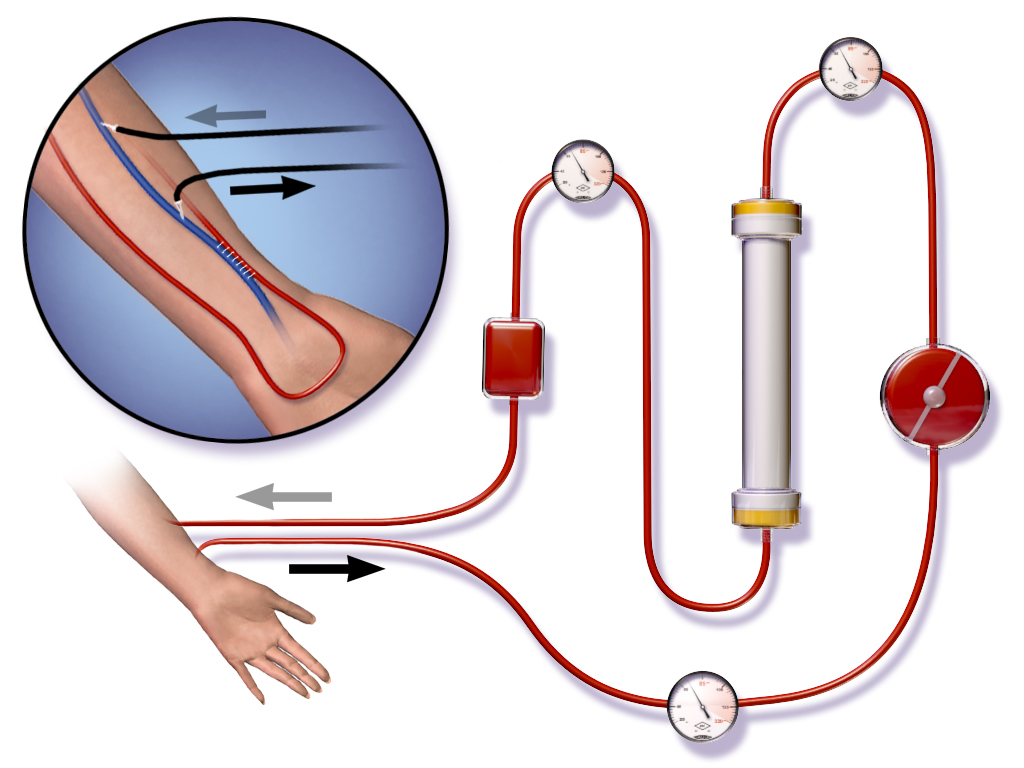
While olmesartan is minimally cleared by the kidneys, changes in how the body reacts to the drug can increase side effects in those with compromised kidney function.
Dosing Recommendations for Hepatic Impairment
For patients with moderate liver impairment, how the body processes drugs might change because liver enzyme activity is reduced. Even though the liver doesn't extensively metabolize olmesartan, liver dysfunction can still impact how it becomes active and its levels in the body.
- No initial dose adjustment is needed for mild liver impairment.
- For moderate liver impairment, start with the lowest effective dose (10 mg/day).
- Using olmesartan in severe liver impairment is not recommended due to a lack of data.
Close medical monitoring is necessary to prevent low blood pressure and electrolyte imbalances in patients with liver problems.
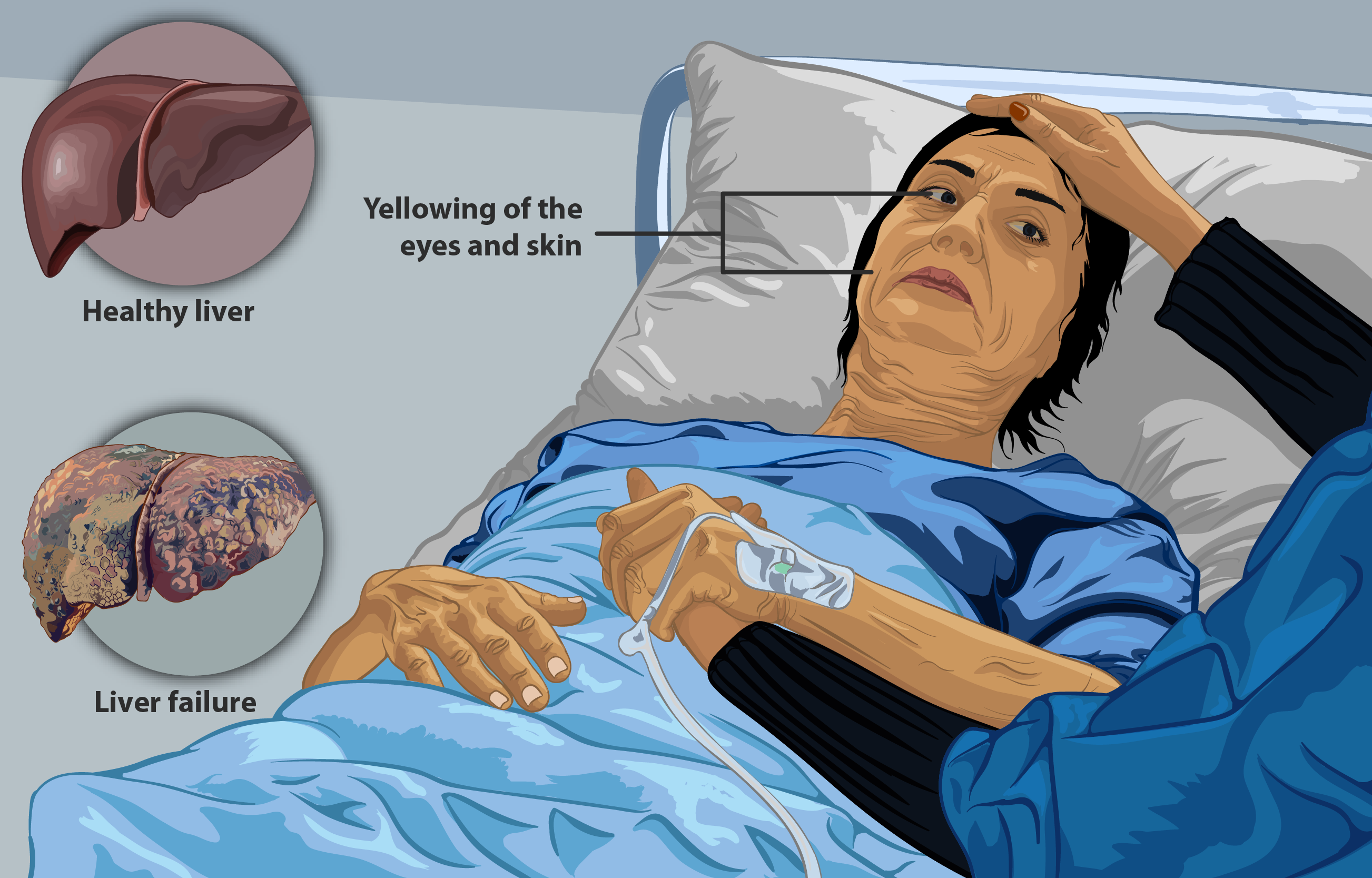
Pediatric Dosage Guidance (If Applicable)
Olmesartan medoxomil is given the light, for children between the ages of 6 and 16 to manage hypertension with dosages customized based on their weight.
- Initiate a dose of 10 mg daily, for children weighing than 35 kg.
- For kids weighing 35 kilograms or more start with a dose of 20 milligrams.
- Maximum recommended dose, for children is 20 mg per day if they weigh than 35 kg and 40 mg, per day for those weighing 35 kg or more.
The safety and effectiveness of this treatment have not been proven for children, under the age of 6 or individuals with lower, than kidney function levels.
Side Effects of Olmesartan Medoxomil
Headache, Dizziness, and Fatigue
The side effects frequently mentioned in relation to olmesartan treatment are usually linked to the dosage and tend to be temporary; often fading away in the weeks of therapy as the body adjusts to reduced resistance.
- Headaches may happen because of an expansion of blood vessels in the brain.
- Dizziness during initial dosage or an increase in dosage
- Fatigue may arise due to perfusion pressures in individuals who are vulnerable.
Making sure to drink water and taking your time when changing positions gradually can lessen the chances of experiencing symptoms.

Nausea, Abdominal Pain, and Diarrhea
While uncommon, gastrointestinal issues have been reported in studies. Of particular note is diarrhea linked to olmesartan, as rare cases of a sprue-like enteropathy (a severe intestinal condition) have been observed with long-term use.
Specific concerns include:
- Nausea: Usually mild and resolves on its own.
- Abdominal pain: Non-specific, but may lead to a need for dose adjustment.
- Diarrhea: If persistent or severe, this requires stopping the medication and investigating for enteropathy.
Ongoing gastrointestinal symptoms should lead to consideration of other conditions, such as autoimmune enteropathy or gluten sensitivity.
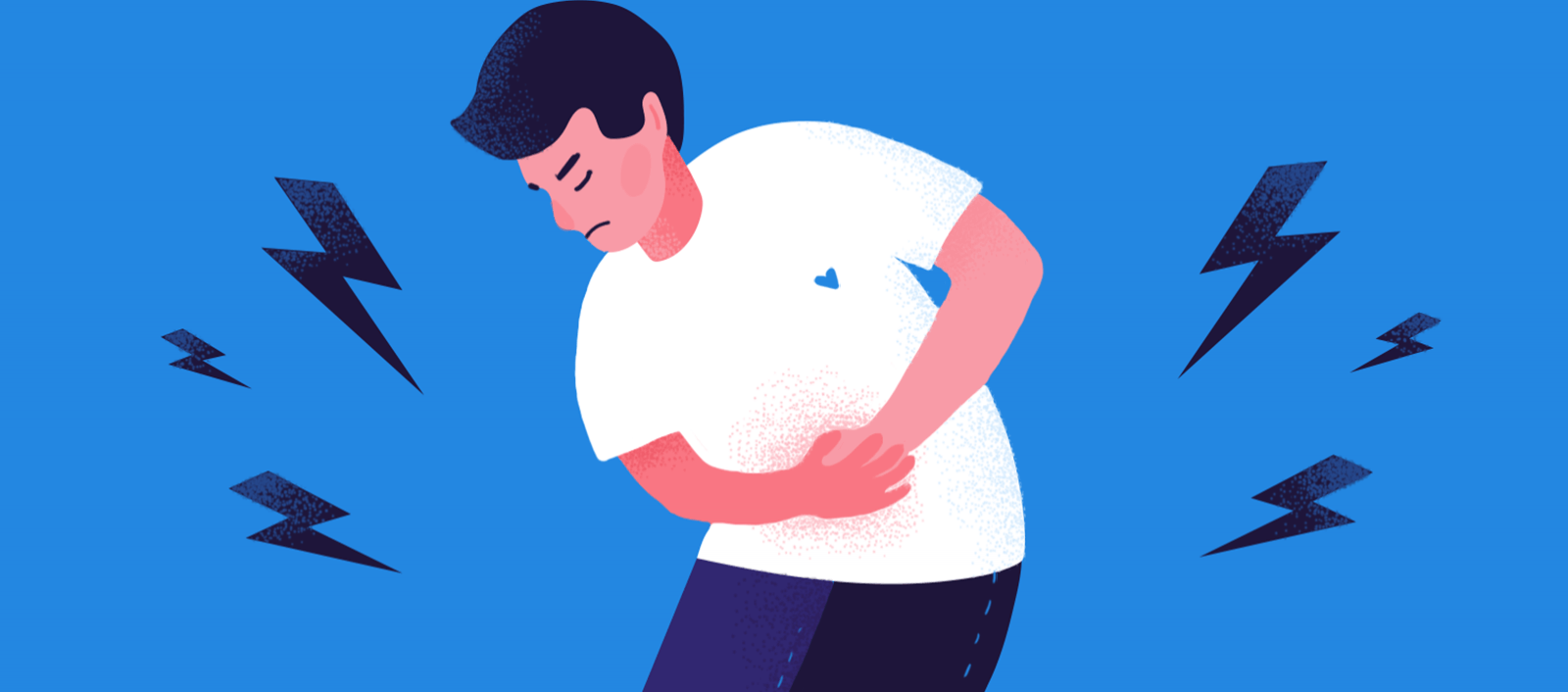
Elevated Creatinine or Potassium Levels
Inhibiting the renin angiotensin aldosterone system has an impact on kidney function dynamics. Olmesartan could result in elevation of creatinine and potassium levels in the bloodstream in individuals with compromised kidney function or those taking potentially harmful medications concurrently. Approach the combination with potassium-sparing diuretics or supplements with care. Hyperkalemia may not always show symptoms. It can pose a serious risk to vulnerable individuals if not identified promptly.
Olmesartan Side Effects Weight Gain
Weight gain is not commonly mentioned as an effect of olmesartan according to reports far; although there have been occasional accounts and post-market observations noting instances of weight increase linked to fluids, in unusual cases – especially when combined with other medications that encourage fluid retention. If there is a weight gain. If edema occurs alongside it may be worth looking into potential underlying issues such as heart failure or renal insufficiency.
Olmesartan Diarrhea
Long-term use of olmesartan has been linked to a rare but severe condition called sprue-like enteropathy. This condition involves damage to the small intestine lining, similar to celiac disease, even though standard celiac blood tests are usually negative. Patients with this can experience chronic, severe diarrhea and significant weight loss.
Symptoms typically improve once the medication is stopped, highlighting how important early detection is.
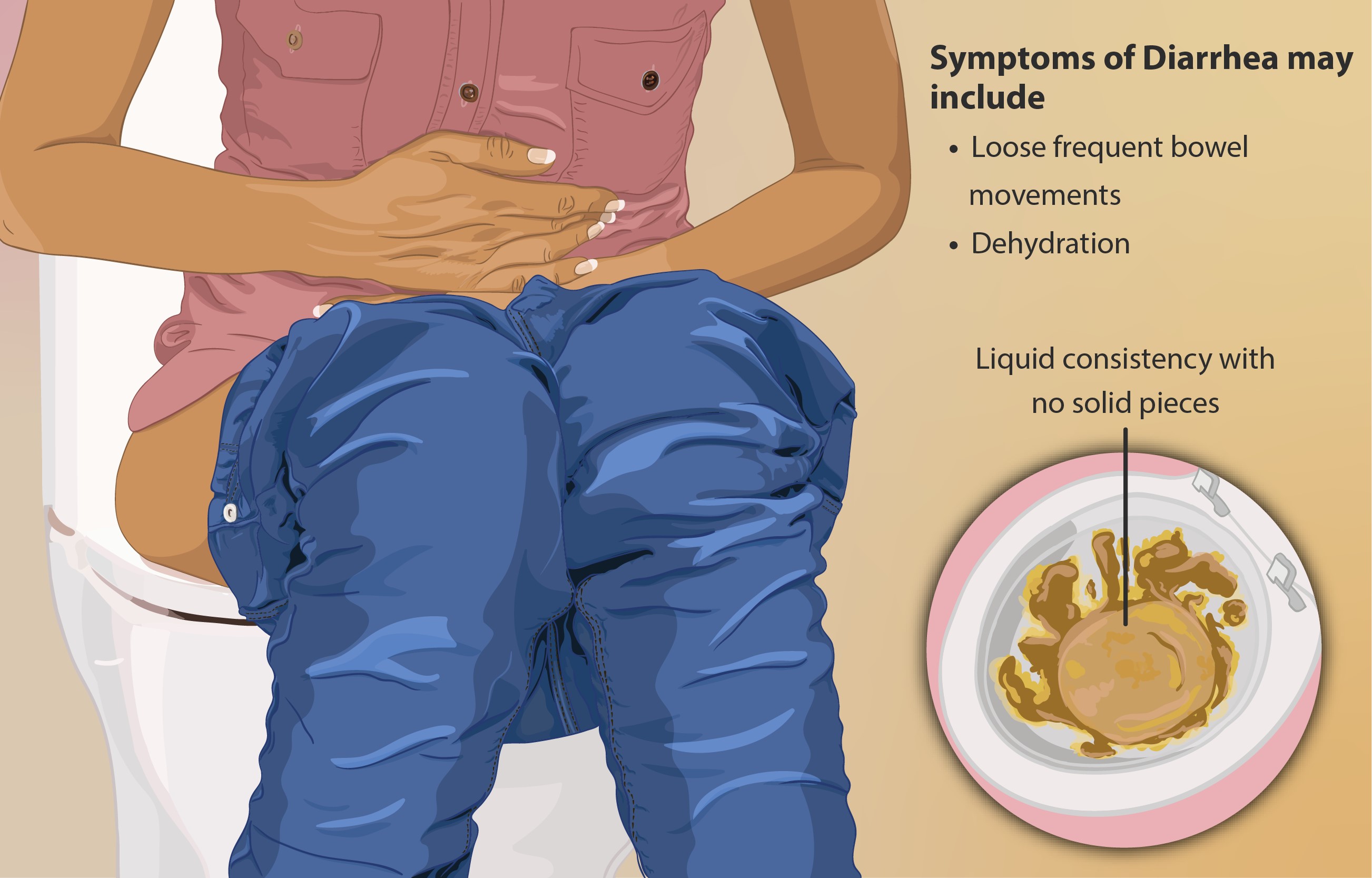
Other Reported and Serious Side Effects
Angioedema and Allergic Reactions
Rarely, angioedema (swelling of the face or throat) can occur, requiring immediate medical attention and permanent discontinuation of the medication. This swelling can potentially obstruct the airway, creating a dangerous situation. While a cross-reaction with ACE inhibitors hasn't been fully confirmed, caution is advised for patients who have previously experienced drug-induced angioedema.
Hypotension and Syncope
In patients with low levels or taking strong diuretics in high doses, olmesartan could lead to noticeable low blood pressure that may cause faintness. Sudden decreases in perfusion pressure could trigger episodes of passing out. Ways to lessen these effects involve: Balancing levels before starting. Patients need to be informed about the symptoms of high blood pressure. Cautioned against making sudden changes in posture without warning.

Renal Function Deterioration
Blocking the renin-angiotensin-aldosterone system (RAAS) can uncover underlying kidney problems in people who have narrowed arteries in both kidneys or severe chronic kidney disease. When treatment begins, creatinine levels in the blood might temporarily increase, but they should stabilize as therapy continues. If kidney function worsens, adjusting the dosage or stopping the medication might be necessary.
Hyperkalemia and Associated Complications
Olmesartan can cause potassium levels in the body to rise, especially when taken with other medications that also increase potassium, like certain diuretics or NSAIDs. This risk is higher for individuals with kidney problems or diabetes, particularly if they are also using potassium-sparing diuretics.
- These potential increases in potassium can lead to dangerous heart rhythm abnormalities and, in severe cases, even paralysis.
- Regularly checking potassium levels is extremely important, especially when increasing the Olmesartan dosage or combining it with other treatments.
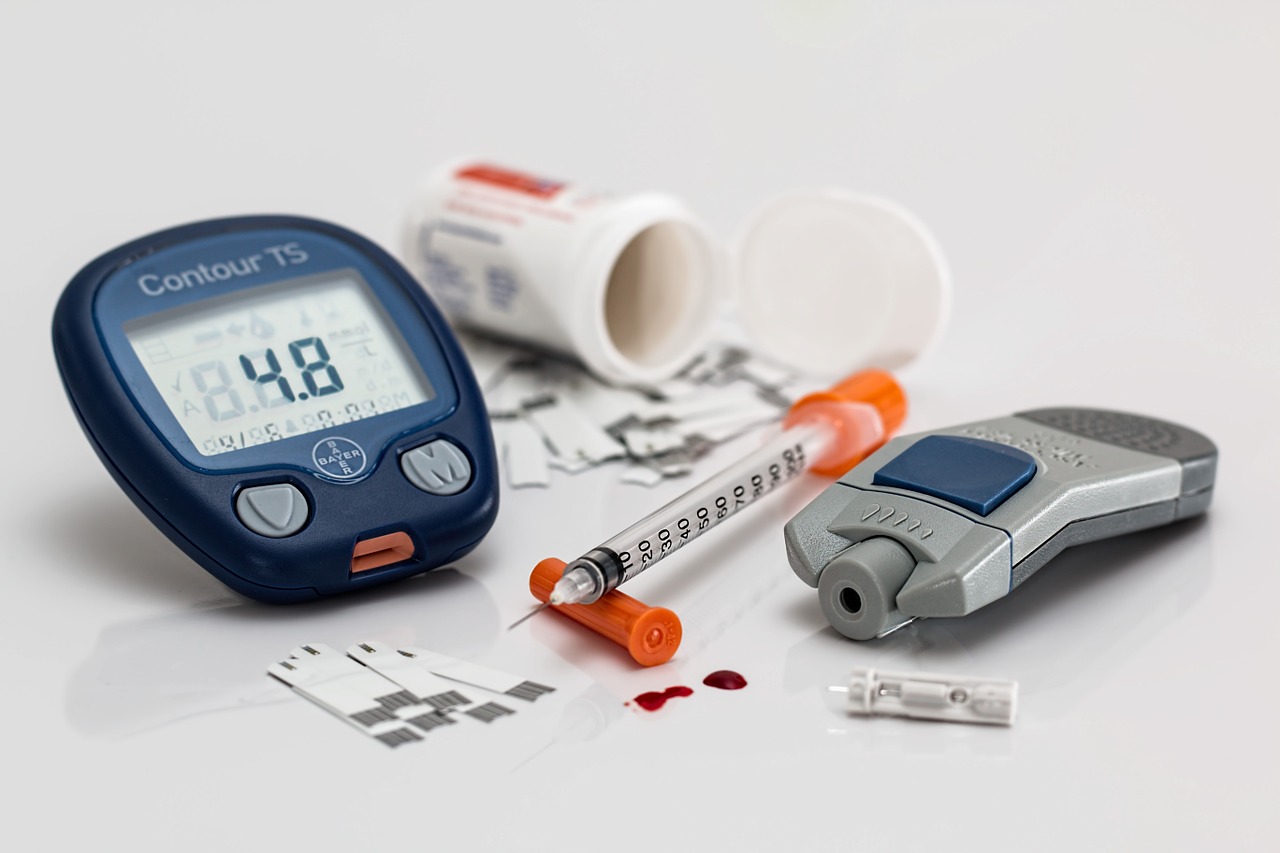
Olmesartan Interactions and Combination Risks
Interaction with Potassium-Sparing Diuretics and Supplements
Because Olmesartan is an RAAS inhibitor, combining it with potassium-sparing diuretics (like spironolactone or eplerenone) or potassium supplements significantly raises the risk of hyperkalemia (high potassium levels). This can lead to dangerous, life-threatening heart rhythm problems or neuromuscular issues.
When using this combination, especially in patients with kidney problems or diabetes, extreme caution is necessary. Consider adjusting dietary potassium intake if needed, and explore alternative types of diuretics when possible.
Use with NSAIDs and Impact on Renal Function
Nonsteroidal anti-inflammatory drugs (NSAIDs), including common ones like ibuprofen and naproxen, can weaken the blood pressure-lowering effect of olmesartan and potentially harm the kidneys. Combining an NSAID, a diuretic, and an ARB (like olmesartan)—often called the "triple whammy"—is particularly toxic to the kidneys.
Using these together can lead to:
- A reduced glomerular filtration rate (GFR), meaning your kidneys filter less efficiently.
- Increased levels of creatinine and urea in your blood.
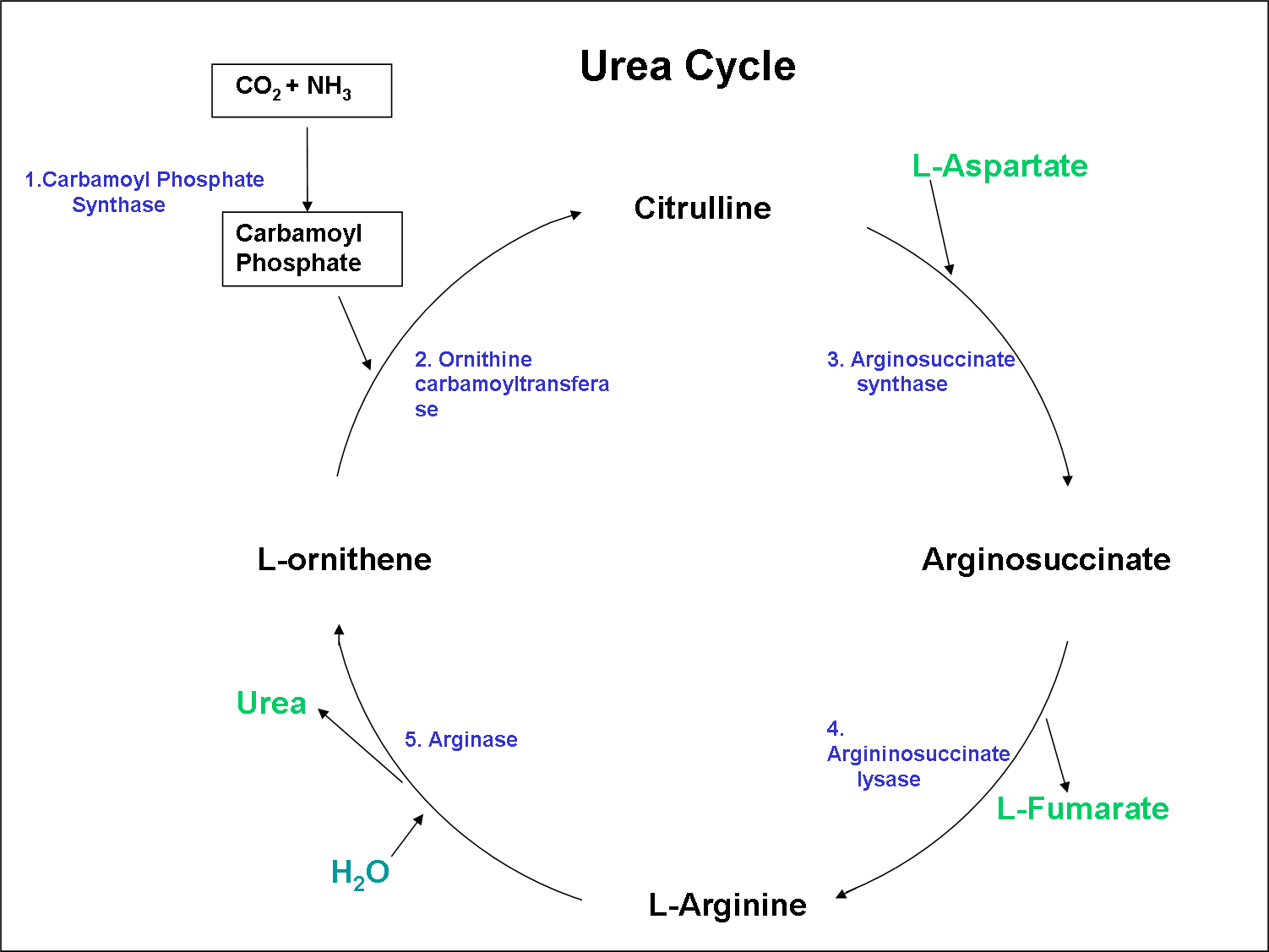
- Worsening of any existing kidney problems.
If a patient needs both an NSAID and olmesartan, their kidney function should be closely monitored. Doctors might even consider temporarily stopping these medications during acute illnesses or dehydration.
Risk of Lithium Toxicity
Olmesartan can potentially reduce how quickly your kidneys clear lithium from your body. This can lead to higher lithium levels in your blood and an increased risk of toxicity, which might show up as tremors, confusion, poor coordination (ataxia), and in severe cases, even seizures or kidney problems.
It's crucial to regularly check lithium levels in your bloodstream. If taking lithium is essential, you should discuss alternative blood pressure treatments with your doctor. This interaction can be risky if not recognized and managed quickly.
Effects When Used with Other Antihypertensives
Olmesartan is frequently prescribed alongside other blood pressure medications like calcium channel blockers, beta-blockers, and thiazide diuretics. While combining these can lead to better blood pressure control, it also raises the risk of low blood pressure, fainting, and electrolyte imbalances.
When starting combination therapy:
- Monitor blood pressure closely.
- Begin with lower doses to see how well the patient tolerates it.
- Adjust doses based on the individual's blood pressure response.
Fixed-dose combinations are available and can help patients stick to their regimen, but the choice should always match the patient's specific treatment needs and how well they tolerate the medication.

Olmesartan Interactions with Alcohol
The consumption of alcohol can enhance the blood pressure lowering impact of olmesartan, resulting in feelings of lightheadedness, drop in blood pressure upon standing up, or loss of consciousness. This is especially important for individuals or individuals with system irregularities. Alcohol related vasodilation could enhance the impact of Olmesartan. When starting or adjusting therapy involving any RAAS modulator medication regime with alcohol intake should be done with care to avoid risks or complications that may arise.
Contraindications for Use
Known Hypersensitivity to Olmesartan Medoxomil
Patients who have a confirmed reaction to olmesartan medoxomil or any of its ingredients should refrain from using this medication. Typical hypersensitivity reactions can vary from skin irritations to whole body responses, including anaphylaxis. If there is a suspicion of hypersensitivity, prompt discontinuation of the medication and seeking assistance are steps.

Use in Pregnancy (Second and Third Trimester)
Olmesartan should not be used during the second and third trimesters of pregnancy because it is known to be harmful to the fetus. Blocking the RAAS (renin-angiotensin-aldosterone system) while the baby is in the womb can cause:
- Oligohydramnios (too little amniotic fluid).
- Fetal renal failure (kidney failure in the baby).
- Pulmonary hypoplasia (underdeveloped lungs).
- Craniofacial deformities (abnormalities of the skull and face).
If a woman becomes pregnant while on Olmesartan, the medication must be stopped immediately, and a safer blood pressure medication for pregnancy should be started.
History of Angioedema Related to ARBs
Patients who have had angioedema from using ARBs like Olmesartan may face a chance of experiencing the condition even though this is uncommon to happen frequently. Having this reaction can lead to swelling in the face or throat area and could be life threatening if breathing is affected due to airway blockage. Emergency response situations might involve the need to safeguard the airways and administer antihistamines or corticosteroids.

Olmesartan Warnings and Precautions
Risk of Hypotension in Volume-Depleted Patients
When starting Olmesartan treatment, patients who are low in fluids because of much use of diuretics or suffering from diarrhea or dehydration may have a higher chance of experiencing low blood pressure symptoms. Ensure that hypovolemia is addressed before initiating treatment. Start with amounts while being closely monitored in a setting. Patients experiencing a decrease in vascular resistance may encounter feelings of lightheadedness or faintness that could result in falls.
Monitoring in Patients with Renal Artery Stenosis
Patients with blockages in both kidney arteries, or in the single working kidney, who take Olmesartan face a higher risk of reduced blood flow to their kidneys and potential kidney problems. This is because their kidneys are particularly sensitive to changes in blood filtration.
For these individuals, it's crucial to:
- Consistently monitor their serum creatinine and eGFR (estimated glomerular filtration rate) levels.
- Stop the medication if kidney function significantly declines.
When considering RAAS inhibition in this group, doctors must carefully weigh the individual risks and benefits for each patient.

Black Box Warning Regarding Fetal Toxicity
Olmesartan comes with a black box warning because it can cause irreversible harm to a fetus if exposed during the second and third trimesters of pregnancy. Due to this well-known risk with this class of drugs, women who could become pregnant should strictly avoid Olmesartan unless they are using effective birth control.
It's crucial to educate patients about this risk and to stop the medication immediately if pregnancy is confirmed. This warning highlights the critical need for counseling all women of reproductive age before they start this treatment.
Monitoring for Electrolyte Imbalances
Olmesartan and similar RAAS inhibitors can affect the balance of electrolytes in the body, like potassium and sodium levels might be disturbed by the use of these medications use. Hyperpotassium is a worry, in this case; however, low sodium levels could also happen when taken with diuretics. Regularly monitor the levels of electrolytes in the blood when adjusting medication doses. Avoid taking potassium supplements. It is crucial to monitor the biochemistry in people at risk such as those with kidney problems or diabetes.
Careful Administration Considerations
Need for Regular Blood Pressure and Renal Function Monitoring
Maintaining treatment over a period requires careful observation of both overall blood pressure levels and kidney function indicators to be monitored closely for any changes or issues that may arise as dosage is started or increased to prevent sudden fluctuations caused by changes in blood flow dynamics or impaired kidney regulation mechanisms. Assess the blood pressure regularly. Especially focus on monitoring it during the two weeks of treatment.
Remember to check the levels of serum creatinine along with BUN and estimated glomerular filtration rate (eGFR). Assess the levels of potassium in the blood to identify hyperkalemia at a stage. Failure to keep an eye on these measurements could lead to undetected blood pressure or worsening kidney function in individuals at high risk.
Use in Patients with Bilateral Renal Artery Stenosis
For individuals with narrowed arteries in both kidneys, or in their single working kidney, olmesartan can significantly reduce blood flow to the kidneys. Because it widens the efferent arteriole (a blood vessel in the kidney), this can severely lower the pressure needed for kidney filtration, potentially leading to acute and even irreversible kidney failure.
Therefore, doctors must take careful measures, including:
- Performing baseline kidney imaging and function tests.
- Frequently monitoring creatinine levels after starting the medication.
- Considering alternative blood pressure medications in severe cases.
The potential benefits of olmesartan must be very carefully weighed against the serious risk of kidney damage in these patients.
Caution in Patients with Hepatic Impairment
Even though olmesartan isn't processed much by the liver, individuals with moderate liver problems might experience changes in how the drug becomes active and its levels in their blood. This could be because their liver is less efficient at the initial breakdown of the prodrug, leading to higher amounts of the medication circulating in their system.
For these patients:
- Start treatment with the lowest available dose (usually 10 mg daily).
- Watch closely for signs of an overly low blood pressure response.
Avoid using it in severe liver dysfunction unless absolutely necessary.
It's recommended to perform a thorough liver assessment before starting olmesartan in this group of patients.
Olmesartan Withdrawal Symptoms
Olmesartan does not lead to drug dependence or withdrawal in the neurochemical context. Therefore, sudden cessation of the medication might cause a rise, in blood pressure or hypertensive emergencies, in situations of uncontrolled or severe hypertension. In cases involving individuals who're particularly sensitive it might be worth considering a reduction in dosage. It is generally recommended to keep up with your therapy unless there are reasons that call for stopping it.
Administration in Specific Populations
Use in Elderly Patients
Elderly individuals frequently have health conditions and take multiple medications while also experiencing a decline in kidney function and overall physical resilience. These factors play a role in how the body processes and responds to olmesartan medication. Begin with the recommended dosage, usually ranging from 10 to 20 milligrams per day. Monitor kidney function often as people age and their glomerular filtration rate decreases. Adjust the dosage cautiously when using alongside diuretics or in cases of kidney impairment. Orthostatic hypotension poses a risk within this group of individuals—particularly during the initial stages of treatment or when used alongside other medications for hypertension.

Risk of Orthostatic Hypotension
Elderly individuals who are frail or lacking in volume may experience symptoms like dizziness and blurred vision when their blood pressure decreases due, to posture changes or medication adjustments. Advise individuals to stand up from sitting or lying down positions. Assessing the likelihood of falls, in the stages of treatment, Preventive actions can enhance adherence to medication. Lessen the health risks linked with events.
Use in Pregnant Women and Nursing Mothers
Teratogenic Risk During Second and Third Trimesters
During the stages of pregnancy ( the second and third trimesters), the use of olmesartan is not recommended due to its harmful effects on fetal development known as teratogenic effects. Exposure to RAAS inhibitors while in the womb can lead to irreversible damage to the fetus such as kidney abnormalities (dysplasia), lack of urine production (anuria) low levels of amniotic fluid (oligohydramnios) facial structure abnormalities (craniofacial deformities) , and even death shortly after birth.

Excretion in Breast Milk and Avoidance During Breastfeeding
Limited information is available regarding the transfer of olmesartan into human breast milk; thus caution is advised when nursing infants, as effects like blood pressure and imbalances in electrolytes or kidney function may occur. Consider stopping breastfeeding or changing to a blood pressure medication. If the baby's care is ongoing and thorough observation is advised. Therapy choices must be personalized to consider the well-being of both the mother and the safety of the child.
Use in Pediatric Patients
Approved Age Groups for Pediatric Use
Olmesartan medoxomil is authorized for managing blood pressure in kids between 6 and 16 years old; however its suitability for kids under 6 years old hasn't been confirmed yet. There is not enough data on its safety and effectiveness in this age group. Not suitable for babies or young children because there hasn't been testing in settings. Therapeutic purposes must be overseen by a specialist who is well-versed in managing hypertension among younger individuals.
Dose and Efficacy Data in Children
In some children, the dosage of medication is determined based on weight. Follows the patterns that have been confirmed in clinical studies.The effectiveness of olmesartan in lowering blood pressure in children depends on the dose given. It is similar to what's seen in adults. The starting dosage for kids under 35 kg is 10 mg per day. Maximum recommended dose for children is 20 mg per day for those weighing than 35 kg and 40 mg, per day for those weighing 35 kg or more. Studies that have been carefully conducted indicate decreases in both diastolic blood pressures while maintaining a tolerability profile similar to that of adults.

Monitoring Parameters in Pediatric Administration
Careful observation is crucial during the treatment of patients due to their changing physiological state. Routine assessment of blood pressure (including measurements taken at the clinic and at home).
Regular monitoring of kidney function (blood creatinine level and estimated glomerular filtration rate) Serum electrolytes play a role in our health.
Specifically, monitoring potassium levels is essential for well-being. Monitoring growth parameters and tracking milestones is essential to guarantee long-term safety and overall tolerance within the system.
Overdose Management
Signs and Symptoms of Olmesartan Overdose
Manifestations of an olmesartan overdose often exhibit heightened effects, with hypotension and associated symptoms being the clinical features noted in such cases. Observed indications may encompass the following; The individual experienced blood pressure and shock. In instances there can be kidney malfunction and disruptions in electrolyte levels. Severe circulatory issues can lead to dysfunction or collapse in individuals.
Emergency Treatment Protocols
If someone overdoses, the first steps are to stabilize their airway, breathing, and circulation. Giving intravenous (IV) fluids like isotonic saline right away is crucial to restore blood volume and counteract low blood pressure.
- Administer IV fluids immediately.
- If blood pressure doesn't respond, use vasopressors.
- Continuously monitor heart activity (ECG) and vital signs.
Activated charcoal might be considered if the overdose happened recently and the time of ingestion is known. Gastric lavage (stomach pumping) is rarely necessary, but an expert might use it within the first hour after the overdose.
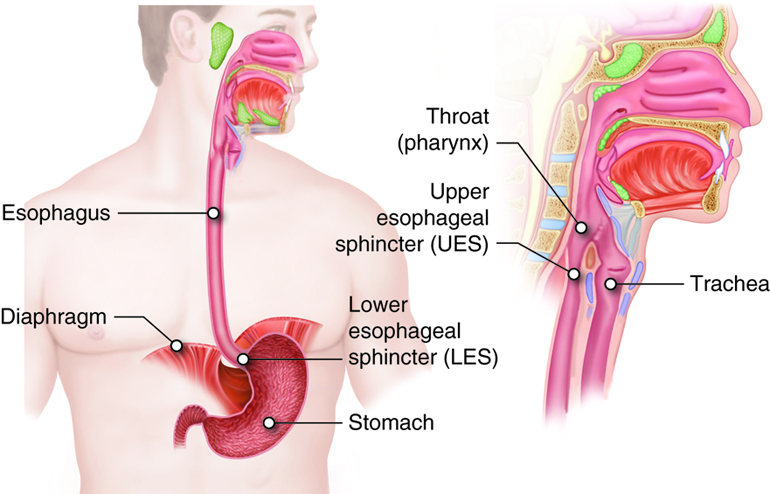
Role of Supportive Care and Hemodialysis
The primary focus of treatment lies in providing care since there is no antidote for olmesartan available currently. Hemodialysis proves ineffective due to the drugs level of plasma protein binding at around 99%. It is crucial to monitor function and maintain a balance of fluids and electrolytes. Occasionally in instances requiring intervention, admission to the ICU may be warranted.
Storage and Handling Instructions
Recommended Storage Conditions (Temperature, Light, Moisture)
Olmesartan tablets need to be kept at room temperature to maintain their effectiveness and stability. Please ensure storage at temperatures between 20°C to 25°C (68°F, to 77°F). Guard against moisture and direct exposure to light. Keep the tablets in their blister or container until you are ready to take them. Please avoid storing in the refrigerator or freezer as the tablets integrity may be affected by exposure to humidity.
Expiry and Stability Considerations
Each product is assigned a specified expiry date to ensure its chemical integrity and effectiveness, for treatment; it is advisable to utilize the product promptly once taken out of its packaging. Avoid using medication that has passed its expiration date. Data, on stability relies on storage in sealed conditions as specified refraining from repackaging unless advised by a professional.
Safe Disposal of Unused or Expired Medication
To avoid accidental ingestion and environmental harm, dispose of olmesartan by using drug take-back programs or following your local guidelines for pharmaceutical waste.
- Never flush medications down the toilet or sink. If a take-back program isn't available, mix the tablets with an unappealing substance like coffee grounds, seal them in a plastic bag, and then throw them out with your regular household trash.
- Always remember to keep all medications out of reach of children and pets, even when you're disposing of them.
Handling Precautions and Patient Counseling
Importance of Adherence to Prescribed Dosage
Sticking to your prescribed olmesartan schedule is crucial for keeping your blood pressure consistently controlled. Missing or skipping doses can make the medication less effective and raise your risk of heart-related problems.
To ensure effectiveness:
- Take your medication at the same time each day.
- Never double your dose if you miss one.
It's important for patients to understand that long-term treatment is essential, even when they don't experience any symptoms.
Avoidance of Potassium-Rich Foods and Salt Substitutes
Patients should be cautious about consuming potassium rich foods like bananas and oranges to prevent the risk of hyperkalemia and should also limit their intake of potassium-containing salt substitutes such as spinach. Discuss limitations with a healthcare professional. Monitor the levels of potassium while undergoing treatment. It's especially important if you're also taking medications that affect the renin-angiotensin-aldosterone system. Consuming too little potassium can cause serious imbalances in electrolytes that could be harmful to your health.
Counseling on Side Effects and When to Seek Medical Help
Patients need to be informed about possible side effects and which symptoms require immediate medical help. These include severe dizziness, fainting, or chest pain, persistent diarrhea (especially with weight loss), or facial swelling/difficulty breathing (which could indicate angioedema). Reporting unusual symptoms quickly allows for early intervention and better safety.
Instructions on Self-Monitoring Blood Pressure at Home
Home blood pressure monitoring is crucial for managing treatment. It's important to educate patients on the correct methods and the importance of keeping records accurately. Measure, at the time each day, if possible in the morning, before taking any medication. Keep a record to bring along to appointments, for reference. Empowering patients with knowledge about target ranges and how to interpret results boosts their ability to self manage and make decisions for their health.
Winbp, Olmesartan FAQ
- How Olmesartan works?
- What are the long-term side effects of Olmesartan?
- Difference between Olmesartan and Olmesartan Medoxomil?
- What is Olmesartan used for?
- Can I take Olmesartan twice a day?
- Is Olmesartan a beta blocker?
- What is the maximum dose of Olmesartan?
- What are the most common side effects of Olmesartan?
- Does Olmesartan cause weight gain?
- How long does Olmesartan stay in your system?
- Does Olmesartan cause hair loss?
- Is Olmesartan an ACE inhibitor?
- What is the most common side effect of Olmesartan?
- What is Olmesartan?
- How long does Olmesartan take to work?
- When is the best time to take Amlodipine and Olmesartan?
- Does Olmesartan reduce heart rate?
- Does Olmesartan cause erectile dysfunction?
- What pain reliever can I take with Olmesartan?
- What is Olmesartan Medoxomil used for?
- Does Olmesartan cause ED?
- Does Olmesartan lower heart rate?
- What are Olmesartan alternatives?
- What can you not take with Olmesartan?
- Are Olmesartan and Valsartan the same?
- Are Olmesartan and Losartan the same?
- Are Olmesartan and Telmisartan the same?
- Are Olmesartan and Olmesartan Medoxomil the same?
- Are Olmesartan and Irbesartan the same?
- Are Olmesartan and Amlodipine the same?
- Can Olmesartan be cut in half?
- Can Olmesartan cause anxiety?
- Can Olmesartan cause a cough?
- Can Olmesartan cause constipation?
- How Olmesartan Medoxomil works?
- How Olmesartan is better than Telmisartan?
- Olmesartan what type of drug?
- When does Olmesartan start working?
- When does Olmesartan peak?
- Where is Olmesartan manufactured?
- Where is Olmesartan metabolized?
- Olmesartan which class of drug?
- Which is better Olmesartan or Telmisartan?
- Which is better Olmesartan or Losartan?
- Why Olmesartan is better than Telmisartan?
- Who manufactures Olmesartan?
- Why Olmesartan is used?
- Will Olmesartan cause weight gain?
- Will Olmesartan lower heart rate?
- Will Olmesartan lower blood pressure?
- What should you avoid while taking Olmesartan?
- Is Olmesartan an ACE inhibitor or beta blocker?
- Is Olmesartan safe for kidneys?
- What happens when you stop taking Olmesartan?
- Does Olmesartan lower cholesterol?
- Who shouldn't take Olmesartan?
- What vitamins should not be taken with Olmesartan?
- What is the most common side effect of Olmesartan?
- What is a good alternative to Olmesartan?
- What foods to avoid while taking Olmesartan?
- Can Olmesartan raise blood sugar?
- Does Olmesartan affect sleep?
- Can I take Paracetamol with Olmesartan?
- Can Olmesartan raise blood sugar?
- Can I take Vitamin C with Olmesartan?
- What cannot be taken with Olmesartan?
How Olmesartan works?
Olmesartan works by blocking receptors for Angiotensin II in the body, which helps to relax blood vessels and decrease the production of aldosterone hormone, leading to decreased blood pressure and reduced strain on the heart and blood vessels.
What are the long-term side effects of Olmesartan?
Long-term utilization of Olmesartan could result in kidney dysfunction and low potassium levels while also potentially causing blood pressure and, in cases, a sprue-like condition leading to severe chronic diarrhea.
Difference between Olmesartan and Olmesartan Medoxomil?
Olmesartan Medoxomil is a type of medication that transforms into the substance Olmesartan within the body and is commonly administered interchangeably in practice.
What is Olmesartan used for?
Olmesartan is mostly prescribed for managing blood pressure (hypertension) assisting in lowering the chances of stroke and heart attack.
Can I take Olmesartan twice a day?
Doctors usually recommend taking Olmesartan once a day; however, they might suggest splitting the dosage under certain circumstances. Don't change your dosage without consulting a healthcare professional.
Is Olmesartan a beta blocker?
Olmesartan functions as an Angiotensin II receptor blocker (ARB), rather than a beta blocker.
What is the maximum dose of Olmesartan?
The advised amount of Olmesartan is 40 milligrams to be taken once a day.
What are the most common side effects of Olmesartan?
Users commonly experience dizziness and headaches alongside pain and fatigue as side effects of the treatment regimen; in some cases diarrhea and hypercalcemia may manifest as well.
Does Olmesartan cause weight gain?
Weight increase isn't an outcome of Olmesartan. It is seldom noted.
How long does Olmesartan stay in your system?
Olmesartan typically stays in the body for 13 hours before being eliminated within 2 to 4 days.
Does Olmesartan cause hair loss?
Hair loss is not a recognized or documented effect of Olmesartan in research.
Is Olmesartan an ACE inhibitor?
Olmesartan functions as an Angiotensin II receptor blocker (ARB) while ACE inhibitors work by inhibiting the enzyme for produces Angiotensin II.
What is the most common side effect of Olmesartan?
The frequent side effect that users mention is feeling lightheadedness when they first begin taking the medication.
What is Olmesartan?
Olmesartan functions as an Angiotensin II receptor blocker (ARB) commonly prescribed for managing hypertension and maintaining heart health.
How long does Olmesartan take to work?
Blood pressure decrease may be noticeable in 1 to 14 days. Usually reaches impact in around 4 weeks.
When is the best time to take Amlodipine and Olmesartan?
Patients typically take both drugs twice a day. It is best to do so, around the same time daily, whether with or without food.
Does Olmesartan reduce heart rate?
Olmesartan doesn't have an impact on heart rate; its main function is to reduce blood pressure.
Does Olmesartan cause erectile dysfunction?
Olmesartan is not typically linked with erectile dysfunction; however there have been a few instances reported.
What pain reliever can I take with Olmesartan?
Acetaminophen is usually considered safe. It is advisable to use NSAIDs such as Ibuprofen with caution because of their impact on the kidneys.
What is Olmesartan Medoxomil used for?
Olmesartan Medoxomil is prescribed for blood pressure management. Lowering the risks linked to cardiovascular issues caused by hypertension.
Does Olmesartan cause ED?
Rare occurrences of dysfunction are not commonly associated with this medication; however some individuals may still experience this effect.
Does Olmesartan lower heart rate?
Olmesartan does not decrease heart rate. It mainly works by relaxing blood vessels to lower blood pressure.
What are Olmesartan alternatives?
Other options consist of ARBs such, as Losartan and Valsartan along with ACE inhibitors, like Lisinopril and Telmisartan.
What can you not take with Olmesartan?
Avoid taking potassium supplements or potassium sparing diuretics as NSAIDs unless, under the guidance of a medical professional.
Are Olmesartan and Valsartan the same?
Both of them are ARBs, though they vary in their chemical makeup and how they work in the body, as the way they are marketed under different brands.
Are Olmesartan and Losartan the same?
Both of them belong to the category of ARBs; however, they vary in dosage strength and potential side effects.
Are Olmesartan and Telmisartan the same?
Both of them are ARBs. They vary in how they last in your body and the way they affect metabolism and their recommended uses in a medical setting.
Are Olmesartan and Olmesartan Medoxomil the same?
Olmesartan Medoxomil acts as a prodrug that transforms into Olmesartan active ingredient.
Are Olmesartan and Irbesartan the same?
Both of them are ARBs; their profiles and dosing vary.
Are Olmesartan and Amlodipine the same?
Olmesartan belongs to a class of drugs known as ARBs (angiotensin II receptor blockers), whereas Amlodipine is categorized as a calcium channel blocker medication. They could be used together in a treatment regimen.
Can Olmesartan be cut in half?
If the tablet has a line to split it in half easily and evenly scored on it can be cut into two pieces If there is no score mark, on the tablet always check with your pharmacist or doctor before trying to break or crush it in any way.
Can Olmesartan cause anxiety?
Rarely, anxiety might not be a side effect of Olmesartan could still happen occasionally.
Can Olmesartan cause a cough?
Olmesartan infrequently leads to coughing compared to ACE inhibitors.
Can Olmesartan cause constipation?
Constipation isn't frequently listed as a side effect of Olmesartan.
How Olmesartan Medoxomil works?
How Olmesartan is better than Telmisartan?
Olmesartan might provide management of blood pressure in individuals; however, Telmisartan offers extra metabolic advantages as well. The decision varies based on requirements.
Olmesartan what type of drug?
Olmesartan functions as an Angiotensin II receptor blocker (ARB) commonly employed in the treatment of hypertension.
When does Olmesartan start working?
Blood pressure usually starts to decrease within 1 to 2 hours after the medication is given.
When does Olmesartan peak?
Olmesartan typically reaches its levels in the bloodstream around 1 to 2 hours after being taken.
Where is Olmesartan manufactured?
Olmesartan is produced by pharmaceutical companies worldwide and can be found in the U.S., Europe, India, and Japan.
Where is Olmesartan metabolized?
Olmesartan is processed in the liver. It is mostly eliminated unchanged through waste and urine.
Olmesartan which class of drug?
Olmesartan is categorized within the group of medications known as Angiotensin II receptor blockers (ARBs).
Which is better Olmesartan or Telmisartan?
Both options work well. Telmisartan might be a choice, for its impact on metabolism improvement, and Olmesartan could provide control over blood pressure levels.
Which is better Olmesartan or Losartan?
Olmesartan is usually stronger and has a duration of action; however, the tolerance and response can differ among individuals.
Why Olmesartan is better than Telmisartan?
Some individuals may experience enhanced benefits from olmesartan therapy compared to others who require stringent blood pressure management measures.
Who manufactures Olmesartan?
Daiichi, Sankyo, and Mylan are among the companies that produce medications globally alongside known generic pharmaceutical manufacturers, like Teva.
Why Olmesartan is used?
It is commonly employed to manage blood pressure and lower the chances of incidents linked to elevated blood pressure levels.
Will Olmesartan cause weight gain?
Weight increase is not a recognized consequence of Olmesartan. It is seldom noticed during use.
Will Olmesartan lower heart rate?
Tpically, Olmesartan doesn't usually impact heart rate.
Will Olmesartan lower blood pressure?
Olmesartan works well in reducing blood pressure by blocking the receptors of Angiotensin II.
What should you avoid while taking Olmesartan?
Steer clear of foods high in potassium. Avoid taking potassium supplements or NSAIDs without consulting a medical professional first.
Is Olmesartan an ACE inhibitor or beta blocker?
Olmesartan doesn't fall into that category; rather it is classified as an Angiotensin II receptor blocker known as ARB.
Is Olmesartan safe for kidneys?
Olmesartan is typically considered safe for the kidneys; however, it is advisable to keep a check on function, especially in individuals with existing kidney conditions.
What happens when you stop taking Olmesartan?
Blood pressure might go up more, which could lead to a chance of heart-related issues occurring. It is important to stop under the supervision of a professional.
Does Olmesartan lower cholesterol?
Olmesartan doesn't directly reduce cholesterol levels; however some ARBs may bring about metabolic changes.
Who shouldn't take Olmesartan?
Women expecting a baby or having kidney issues or allergic reactions to ARBs should avoid consuming Olmesartan.
What vitamins should not be taken with Olmesartan?
Avoid taking any supplements that contain potassium or using salt substitutes without consulting your doctor.
What is the most common side effect of Olmesartan?
The primary side effect often experienced is dizziness typically caused by a drop, in blood pressure.
What is a good alternative to Olmesartan?
Losartan and Valsartan are often seen as options, along with Telmisartan and Lisinopril in some cases.
What foods to avoid while taking Olmesartan?
It's best to steer clear of foods that're high in potassium like bananas and oranges or salt substitutes unless you've been given advice.
Can Olmesartan raise blood sugar?
Olmesartan generally does not increase blood sugar levels, and it does not have an effect on metabolism levels
Does Olmesartan affect sleep?
Sleep issues are not typically linked to Olmesartan medication.
Can I take Paracetamol with Olmesartan?
Using Paracetamol alongside Olmesartan is typically considered safe.
Can Olmesartan raise blood sugar?
Olmesartan doesn't seem to be linked to increasing blood sugar levels.
Can I take Vitamin C with Olmesartan?
It's generally safe to take Vitamin C along with Olmesartan unless there are reasons not to.
What cannot be taken with Olmesartan?
Avoid taking NSAIDs and potassium supplements or any other medications that impact the angiotensin system without consulting a healthcare professional.

